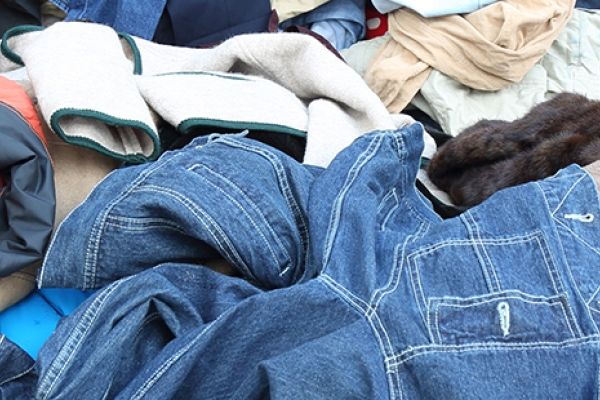Returned and unsold textile products put considerable strain on the environment
As online shopping, easy returns, shifting consumer tastes and fast-fashion tactics have become more common in Europe, so have the amounts of textiles that are sent back or left unsold. A new report by the European Topic Centre on Circular Economy and Resource Use, co-authored by VITO, reveals the scale and environmental impact of returned and unsold textile products in Europe.

The report, titled "Volumes and destruction of returned and unsold textiles in Europe's circular economy", estimates that around 20% of clothing and 30% of footwear ordered online in the EU are returned by consumers. On average, one third of these returned products end up being destroyed. Also taking into account overstocks, it has been estimated that 4-9% of all textile products put on the market in Europe are destroyed before use, amounting to 264,000 tonnes to 594,000 tonnes of textile products destroyed every year.
The environmental impact of returned and unsold textiles is significant. For example, the report calculates that the carbon footprint of processing and destructing returned or unsold textiles is responsible for up to 5,6 million tonnes of CO2 equivalent greenhouse gas emissions per year.
There are several drivers for the destruction of returned and unsold products, such as consumer behaviour, legal frameworks, economic incentives and logistical challenges. The report provides a brief overview of policy and business measures for addressing these.
To reduce returns and unsold items companies can:
- implement avoidance of returns strategies to avoid products to be returned before they are sold like accurate product descriptions and size advice.
- implement gatekeeping returns strategies like limiting the return period or raising awareness on the impact of a return.
- improve on forecasting and inventory management.
However, the measures that companies can take for reducing returns and unsold items are not enough to address the environmental impact as overproduction and destruction are seen as acceptable in the textiles industry and even make economic sense. To tackle this, the report states that there is a need for government policies. Hard policy actions, like laws and taxes, can restrict consumer choices and steer company behaviour, while soft policy options, like education and nudging, can influence people’s behaviour and choices in a more subtle way.
The report is part of the work on textiles in the circular economy by the European Environmental Agency (EEA) and its European Topic Centre on Circular Economy and Resource Use (ETC CE). As coordinator of this topic centre VITO has contributed to this large body of work. Previous textile related reports include:
- Textiles and the environment in a circular economy (2019)
- Plastic in textiles: potentials for circularity and reduced environmental and climate impacts (2020)
- Study on the technical, regulatory, economic and environmental effectiveness of textile fibres recycling (2021)
- Textiles and the environment: The role of design in Europe's circular economy (2022)
- Microplastic pollution from textile consumption in Europe (2022)
- LCA-based assessment of the management of European used textiles (2023)
- EU exports of used textiles in Europe’s circular economy (2023)
- The role of bio-based textile fibres in a circular and sustainable textiles system (2023)





